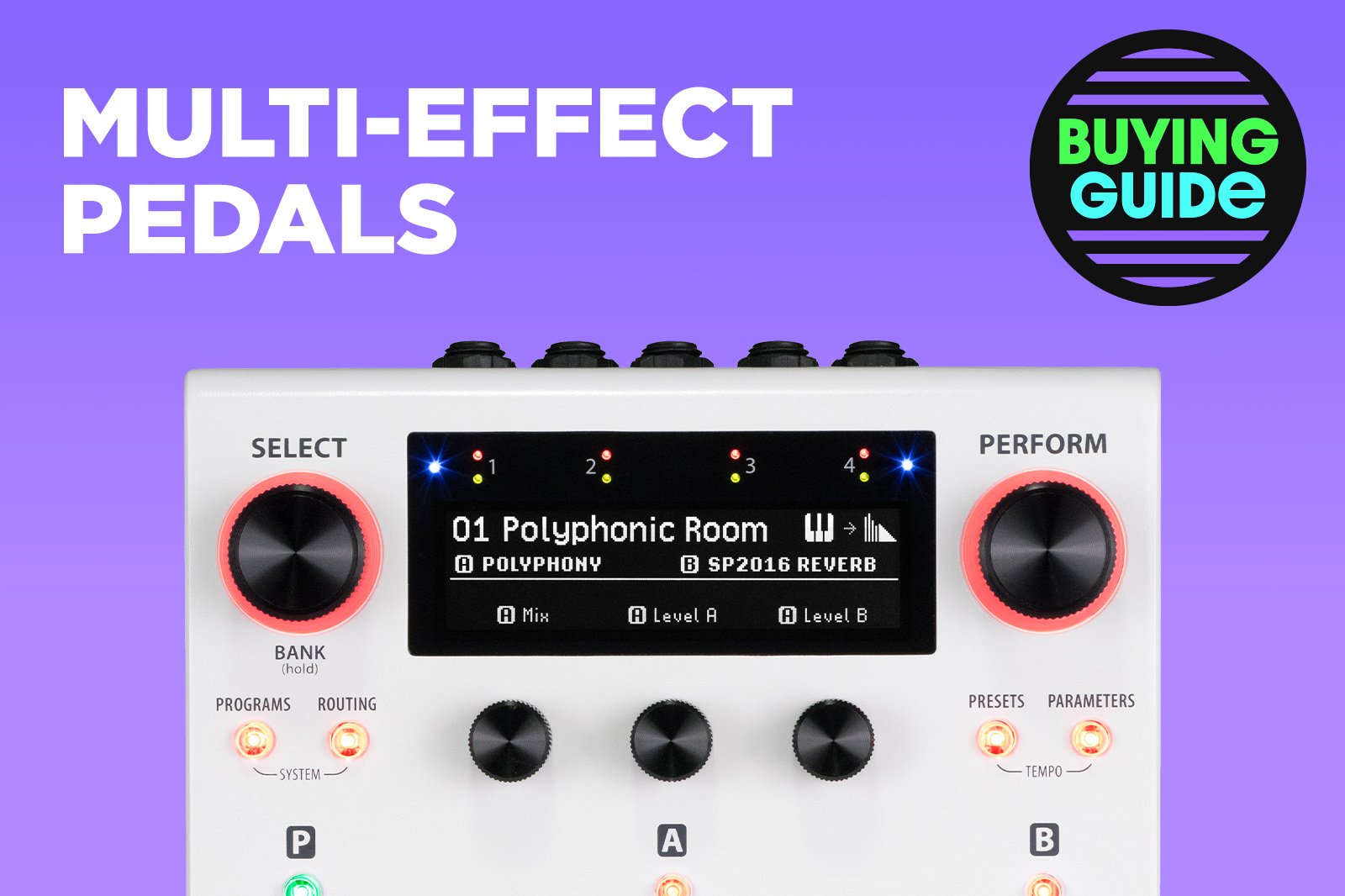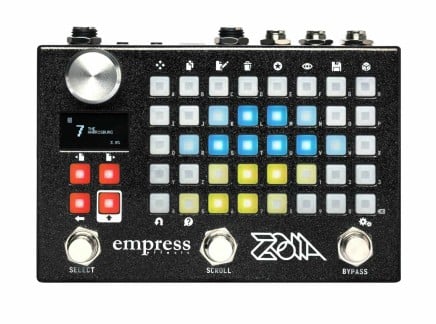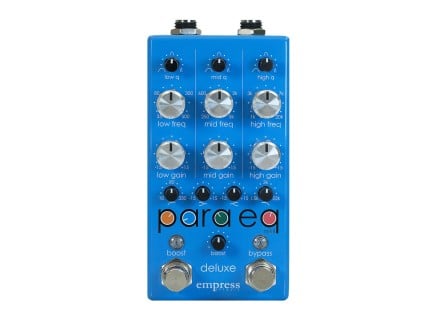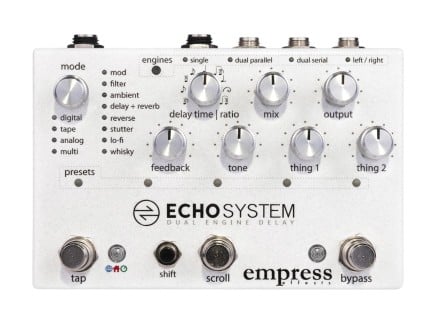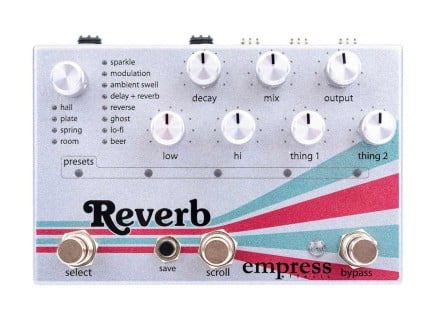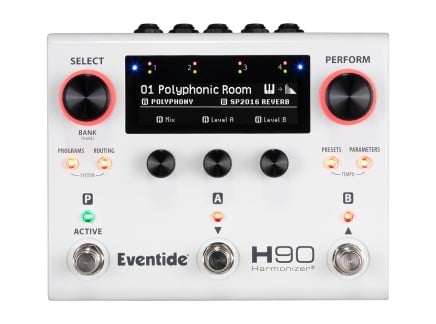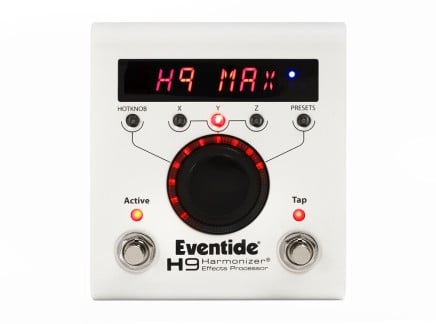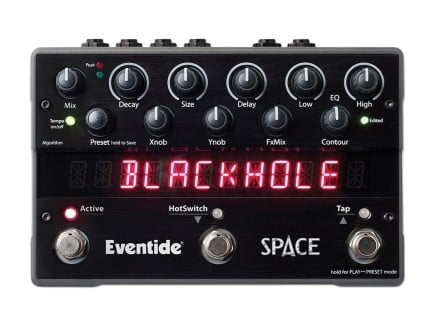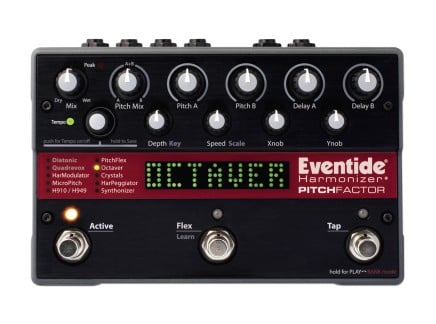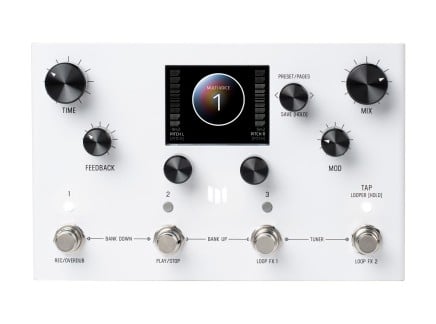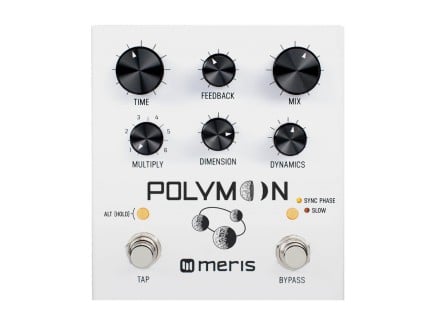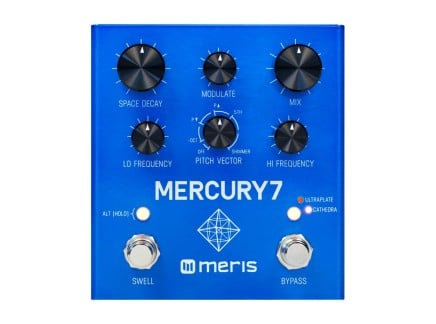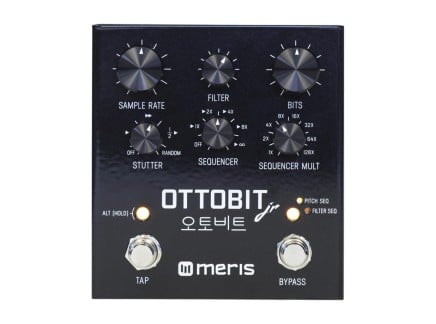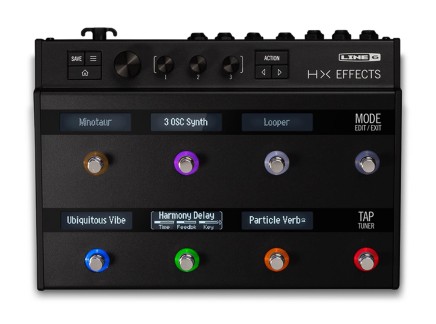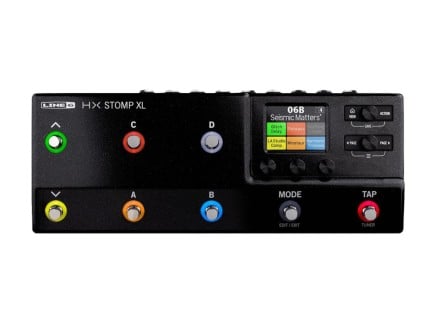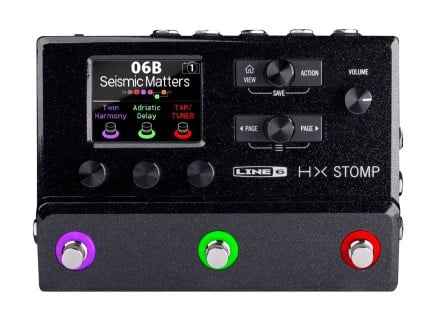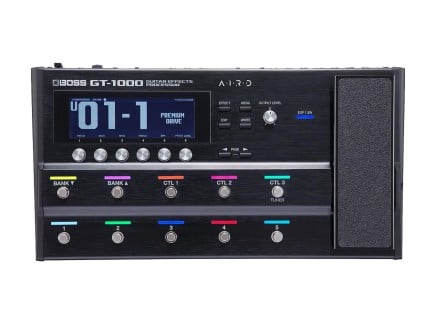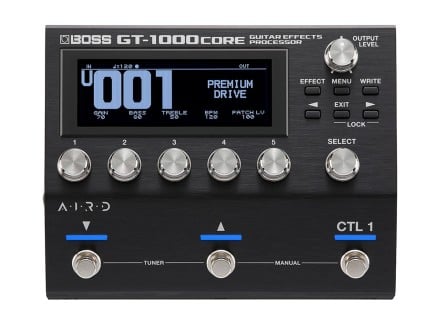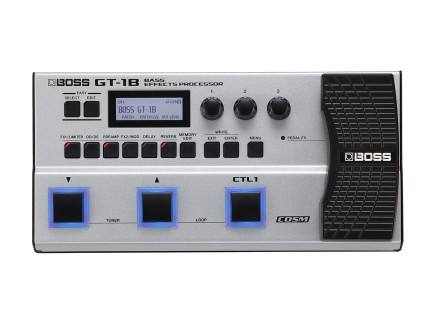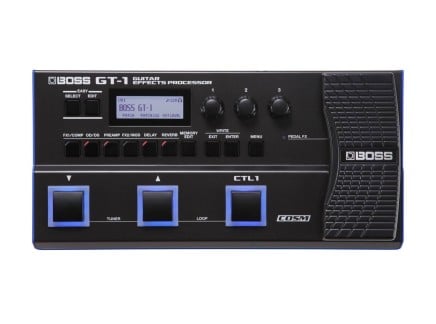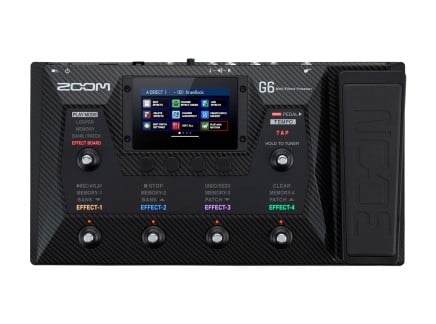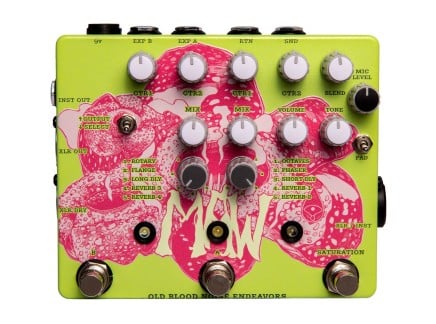Let's talk about multi-effect pedals! What's the best multi-effect pedal out there? Which one should you buy? Which one is best for guitar, synth, bass...?
I remember a time when "multi-effect" was a bad word: for a lot of folks, it implied that a device wasn't focused enough, or was trying to cram too much into one box. In some cases, that can be true...but today, that stereotype is, more often than not, dead wrong. Advances in music technology and years of experience have changed things. Now, some of the best pedals you can buy altogether are multi-effect pedals...and in this article, we're paying tribute to many of our favorites.
Multi-effects give you the ability to deeply explore many types of effect processing using a single device with a single user interface. They can help you to build sets where you shift between multiple presets, creating an ever-changing cascade of sound. For people just getting into the world of hardware effect processing, they also present excellent value: they're an awesome way of dipping your toes into hardware effects, learning what you like/what you need while making music along the way. And given how dang good many of them are...you simply won't outgrow them.
All that said, let's take a look at some of our favorite multi-effect pedals.
Empress ZOIA: Multi-Effect, or Secret Modular Synthesizer?
Empress has been churning out quality effects pedals for years, but when it came time to make a multi-effects pedal they opted for an atypical approach. Instead of the typical pedalboard-like structure that a lot of multi-effects take, ZOIA employs a grid-based patching interface that has more in common with modular synthesizers than effects pedals. Simply drop a module onto any free square(s), hold down an input or output, and tap a compatible destination—ZOIA allows you to easily build highly customized effects chains that are otherwise rarely found outside of modular synthesizers or software.
Constrained only by the limits of the CPU (which is fairly generous in most typical scenarios), ZOIA can serve a number of roles from custom effects processor to MIDI control generator, and anything in between. ZOIA contains a number of ready-to-go modules, like reverbs, distortions, loopers, and plenty of other classic effects. ZOIA gives you the freedom to combine these in any manner of series and parallel configurations as you'd like—if there's a non-existent pedal you've always dreamed of, ZOIA can bring it to life.
Because ZOIA is inspired by modular synthesis, it does include a number of synthesizer building blocks that you won't find in a traditional multi-effects pedal. These include things like LFOs and envelope followers, which can be found in classic guitar effects like chorus and auto-wah. But in ZOIA, these can be used to enhance any type of effect—modulate the size of your reverb, or add delay time fluctuations based on the dynamics of your playing. There are also sequencers, routing switches, mixers, and even pitch detectors that can be patched around inside ZOIA or translated to external MIDI or CV.
ZOIA is a great choice for anyone that's looking for a different take on the multi-effects pedal package. Alternatively, if you're a synthesist looking for even more modular inside your modular, the ZOIA Euroburo is a Eurorack-version of the same platform with additional control voltage I/O for further integration into your system.
Poly Effects Beebo: Touch Screen Multi-Effects Wonderland
Poly's Beebo has been around for a while, remaining a powerhouse of pointer-finger patching thanks to regular, robust firmware updates. By using a wonderful, large touch screen along with a pair of knobs and trio of footswitches, creating your own custom effect or signal chain is fairly easy. The main way to interact with this pedal is through that gorgeous touch screen. Each patch is set up to look and feel like a modular synth or Max patch, with virtual connector cables that let you route audio and modulation wherever you want.
Beebo has not one, not two—but four inputs and four outputs…allowing for a wide range of signal routing options. You could create up to four interesting, independent channel-specific effect chains. If you wanted to use this with a mixer, you could create your own custom effects loops. You could create a quadraphonic processing environment. Or heck, you could combine multiple instruments together—Beebo makes all of these workflows incredibly easy and fluid. With over 100 different modules, including ports of the iconic Mutable Instruments Clouds, Rings, Marbles, and others, Beebo is more than just an effect and can be an instrument all on its own.
When using it as a multi effect, the interface is snappy and building patches is fairly straightforward. Because of the interface, it can take a bit of time to build out a full signal chain, however, the workflow is very similar to the Zoia. Simply add a module and use two fingers to build a connection. This works with MIDI and CV inputs, built-in modulation sources, like LFOs, sequencers, and more.
If you don't need CV/MIDI capabilities or the full-blown synthesis functionality, Beebo is still an all-in-one powerhouse that could replace a pedalboard—or at least a pretty big chunk of it. With basic but beautiful effects like compressor, chorus, phaser, delay, and outrageously good convolution reverb, you've got the essentials covered. Even if you already have a robust pedalboard, the options for routing with the I/O open up a world of creative possibilities.
And of course, if you want to go even deeper, Poly's Hector packs all of Beebo's features into a Eurorack module, rife with CV I/O connectivity.
Eventide H90: Cutting-Edge Dual Effect Powerhouse
No guide on multi-effects would be complete without mentioning Eventide, who are longstanding veterans of effects processing technologies within the music industry. Though they made a name for themselves in the realm of studio gear and launched a line of pedals in 2007, Eventide put out their first true multi-effects pedal in 2013: the H9 Harmonizer. While it can only run one algorithm at a time, H9 is a multi-effects pedal in the sense that it offers an assortment of new effects as well as updated legacy sounds from Eventide's other pedals and rack units. But in the final months of 2022, Eventide raised the bar with H90, their latest, super-charged multi-effects pedal.
After nearly a decade of developing effects for the H9 and listening to user feedback, Eventide packed H90 with an abundance of processing power, performance features, and enhanced user experiences. With all 52 algorithms for the H9 returning, plus ten all-new ones, H90 provides the ability to run two algorithms at once. This might not sound like much compared to other multi-effects pedals out there, but the quality of Eventide's effects speaks for itself and many algorithms do contain multiple effects themselves, such as TremoloVerb, PitchFuzz, and Crystals. You can even engage seamless spillover between two programs, allowing the sounds of two algorithms to elegantly morph into another pair without any abrupt cutoff of tails.
In line with the other Eventide Harmonizer products from which it draws its lineage, H90 is adept not only as a pedal but also as an integral component of a working music production studio. Though Eventide offers a dedicated H90 Control software application, the ability to tweak and create presets and programs via the pedal itself is a welcome step-up from the H9's more limited display and navigation system. And with extensive parameter mappings to expression pedals, MIDI, and the H90's own footswitches and controls, there's no shortage of ways to create lively and interactive effects to enhance your music.
If top-tier effects are a must for you, H90 provides unmatched Eventide quality both on stage and in the studio.
Meris LVX: an Unsuspecting Kaleidoscopic Multi-Effect
The Meris LVX pedal is touted as a Modular Delay System, but to simply view it as a delay pedal doesn't do the justice to the power that is packed within. Indeed, the delay algorithms are incredibly sophisticated, and the robust settings allow for some unconventional sounds that blur the lines between effects. Outside of the delay, it includes several other effects that can function in tandem with or independently of the delay algorithm.
LVX is divided into sections—Dynamics, Preamp, Pitch, Filter, and Modulate. Each of these offer effects that can be placed pre delay, post delay, pre + dry, or in the delay feedback loop. Using pre + dry routing, you can turn the LVX into an envelope follower filter, Ottobit Jr.-inspired sequenced bit crusher, a simple swell, or gentle overdrive. Turning the main Mix all the way down will completely mute the delay algorithm, leaving you with the dry along with any effects that are pre + dry. It will require some fairly deep menu diving, but it is worth the clicking and spinning for the pristine sound of a Meris effect.
You can dial in just about any effect you can think of, even with the delay engaged: by turning the Time super fast (it can go to 0ms) chorus-like, double-slap, and other subtle modulation effects can be achieved. Using the Mod parameter can help with this. In the Dynamics menu, an incredible Compressor algorithm is hiding in plain sight. It is worth putting this on just about any patch; when combined with the Tube setting under the Preamp section, you get warmth and presence that can easily get cranked for grit on any source.
For more experimental and woozy settings, the Modulate section has wonderful flangers, a chorus, cassette emulation, and even a granular setting. To tame any aggression or heighten the drama, several types of filters are available in the Filter section. The creme de la creme of the LVX is the robust Modifiers section, which gives you freely assignable LFOs, an envelope follower, S&H, plus a 12 step sequencer. Oh, and on top of everything we mentioned is an independent Looper, which runs separately from all of the presets, making it easy to switch between some grit, a flange, and your delay—or have a preset where the Looper runs into the effects or is placed in the Feedback path.
The Meris LVX is a great multi-effects pedal that is centered around a robust delay. However, each algorithm can stand on its own without the need to have the delay turned on. This is recommended for those who want effect chains where having a delay option is handy, as well as for those who are comfortable with setting up their own presets. LVX is incredibly deep and can help to create truly unique sounds.
Line 6 HX Series: Multiple Models, All Incredible
Out of all the pedal manufacturers listed in this article, Line 6 may have single-handedly played the biggest role in shaping the current landscape of guitar-centric multi-effects processors. The release of their red, bean-shaped POD back in 1998 put them on the map, and their continually refined approach to amp modeling furthers the goal of Line 6, and the many other companies that followed in their footsteps, to close the gap between the sound and feel of digital amp models compared to their real-world counterparts. Today, Line 6's flagship line of Helix multi-effects processors offers their most powerful modeling technology to date, and also includes premium effects such as delay, pitch-shifters, reverb, and more.
The Line 6 HX family of products is a spin-off of the Helix line, incorporating the same amp and effects modeling technology in a more compact package. Of these, the HX Stomp and HX Stomp XL offer the most complete assortment of models, containing all of the same amps, speaker cabinets, and effects from the Helix. Both units allow you to configure up to eight different blocks in series or parallel signal paths, as well as incorporate other pedals via the external effects loops. On top of that, both HX Stomps feature highly configurable footswitches for enabling various effect blocks, using preset snapshots, or even controlling external devices via MIDI. Both units can also serve as flexible USB audio interfaces for directly tracking and reamping with your favorite DAW.
For a more straightforward multi-effects approach, Line 6 refreshed their POD line with POD Go, which also incorporates many Helix-grade effects and models. But the Line 6 effect models aren't just tailored for guitarists—they'll sound great with any instrument! With this in mind, Line 6 offers the HX Effects, an effects-only option with the amps removed but retains all the I/O and connectivity you'd need to include it in a guitar or synth-based rig.
Whether you're a multi-instrumentalist that needs versatile effects processing or a guitarist who wants some proven modeling technology to power your rig, Line 6 offers a wealth of different multi-effect options for a variety of musical applications.
Boss ME-80 + GT-1000: an Old Standby + New Territory
Boss has been making pedals for ages and it's only fitting that they were some of the first to create multi-effects pedals. One of their most popular and affordable is the ME-80, which boasts eight different effect types, eight footswitches, and a built-in expression pedal; the ME-80 can replace a pedalboard on stage or studio.
One of the nicest features of the ME-80 is also something that might turn some people off: its size. While there are several companies making compact, feature-rich interfaces that require a bit of finessing to coax out all the features, the ME-80 has dedicated knobs to control the parameters, making it easier to quickly adjust settings. Using the eight footswitches, you can easily switch between presets and even toggle specific effects in a preset. With dedicated sections for Preamp, EQ + special effects, Reverb, Compression + special effects, Overdrive/Distortion, Modulation, and Delay (each with multiple selectable flavors/types!), and a multi-function expression pedal controller (for Whammy, Volume, and Wah-type effects), this is a surprisingly flexible, powerful sound processor. It'll give you everything from straightforward, great-sounding guitar tones to way-out-there sound effects and insane processing. And again, it's all under preset control, so you can always get back to your sounds at a moment's notice.
Perfect for anyone who is hesitant to start buying individual pedals or if you're looking for a basics-in-a-box solution, the ME-80 holds up: it's one of our top recommendations for anyone new to pedals who needs a great-sounding way to dive in. However, if you are looking to beef up your signal chain, already have a lot of effects, or need more complex routing options than the ME-80's fixed effect order, the Boss GT-1000 might be a better fit.
Like a lot of their multi-effects units, the Boss GT-1000 features the classic Boss sound that has resonated rooms and guitar amps for decades. Featuring the latest sonic technology with 32 bit/96kHz AD/DA converters, their proprietary AIRD technology that gives an authentic feel when used with an amp or DI, and of course their flagship effect algorithms built using the BOSS DSP engine. It's hard to go wrong with the GT-1000 as it has just about everything you could need in one board.
With a large screen that uses a bevy of clickable encoders, editing effects is simple…and with the factory presets, you will have hundreds of starting points. The 10 foot switches and expression pedal are all customizable routed to be used for whatever purpose you'd like. There are simply too many effects to go through one-by-one, but the basics start with the AIRD amp modeling, which gives you the authentic feel of a guitar or bass amp. This pairs splendidly with the USB audio interface integration right on the pedal, letting you go right into your DAW from the device.
In each preset you have small nodes of "Stompboxes" which you can run in series or parallel. This is where you can assign your distortion, delay, modulation effects, EQ, or whatever you want from their library of effects. You can even add Mastering FX to the chain, to deliver record ready results instantly—your solo ambient guitar album can be recorded and released immediately.
GT-1000, no doubt Boss's flagship, is the culmination of decades of research from one of the companies whose name is synonymous with effects pedals. While a colorful collection of new and vintage Boss pedals is aesthetically pleasing, if you're willing to forgo the prismatic ray for a more austere exterior, you can get an entire collection of Boss-quality effects right at you finger (and toe) tips.
Infinite Possibilities
As we said before, the world of multi-effects is vast...and as such, there are many we didn't discuss today. Zoom, for instance, makes a huge line of multi-effect processors in various formats; Kemper packs amp modeling and effect processing into their renowned Profiler series; and much, much, more. But we hope that this guide has offered you insight into everything a multi-effect pedal can be. It can be a straightforward replacement for a pedalboard. It can be a pocket-sized modular synthesizer. It can be a way of crafting ever-changing soundscapes, structuring live sets, and much, much more.
Still looking for the best multi-effects pedal for you and your music? Check out our full selection of multi-effect pedals, or reach out to talk. We'd be happy to help you take the next step in your effect processing journey!

